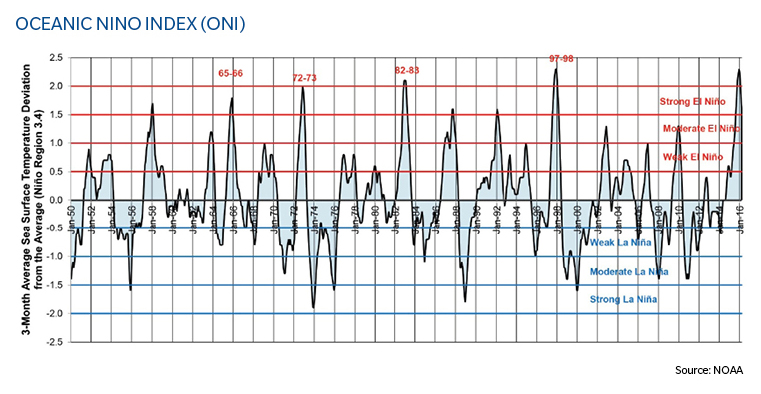

The U.S. National Oceanic and Atmospheric Administration (NOAA) Climate Prediction Center predicted a 55 percent to 60 percent chance that strong El Niño conditions would transition to La Niña conditions in the fall and winter of 2016-2017. (1) This kind of transition year has been observed four times since 1950 (1966, 1973, 1983 and 1998).

The Joint Typhoon Warning Center (JTWC), using the Saffir-Simpson scale, compares the number of tropical cyclone landfalls and their intensity during these transition years with the long-term average from 1945-2014. JTWC compares the number of landfalls of tropical cyclones of Category 1 and higher and severe tropical cyclones of Category 3 and higher.
In China, during the four prior transition years, the average number of tropical cyclone landfalls is 12.5 percent below the long-term average, while the number of severe tropical cyclones is 15 percent above average.
In Japan, the average number of tropical cyclone landfalls is 15 percent below average. For severe tropical cyclones, there have been no landfalls during previous transition years.
In Taiwan, the long-term average corresponds to approximately 1.6 landfalls over a four-year period. During these four previous transition years, two tropical cyclones made landfall, one Category 4 and one Category 5.
Note:
1. NOAA Climate Prediction Center / NCEP's September 5, 2016 report ENSO: Recent Evolution, Current Status and Predictions.